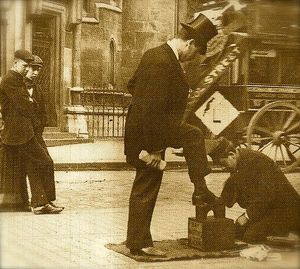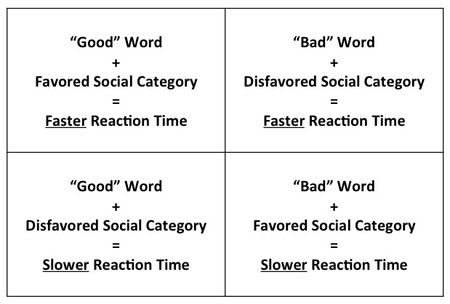By Dr. Ken Broda Bahm:
Once during oral voir dire in a commercial case, I listened as one potential juror noted his cynicism toward the civil trial process. “Rich people fighting over money,” he said. While that particular venire member may have been angling for a strike, and definitely received one, the comment does speak to an important class difference that is often evident in a jury trial, where the typical juror will be at a lower socioeconomic status than most of the litigants. Not uniformly, of course, rich people do serve, but the average juror is going to be less wealthy than the average litigant. When looking at commercial or intellectual property cases, or looking at the defense side in products, employment, energy, and professional liability cases, parties are often justifiably worried about whether that class difference will translate into an adverse bias. If jurors view wealth together with a perception of irresponsibility, unearned entitlement, and possible corruption, then that bias could reduce the wealthy litigants’ credibility and chances for success.
But do jurors in general harbor a bias against wealth? Based on some new research, the answer is “Probably not.” In fact, it is more likely that your potential jury is biased in favor of the wealthy. In a new study (Horowitz & Dovidio, 2015) published in Group Processes and Intergroup Relations, two Yale researchers looked at both expressed attitudes as well as implicit bias regarding the rich. What they found is that, even as participants tend to maintain expressed attitudes against the rich, they will retain an implicit bias in favor of the rich. What’s more, the study goes on to show that it is the implicit bias that wins out when those participants later evaluated a dispute involving a rich person. This post looks at the study and the measurement, and also looks at a few implications for handling implicit bias generally and in the case of wealth.
The Research: Wealth Wins
The researchers, Suzanne Horwitz and John Dovidio, recruited American adults online who typically identified as middle class. Then they measured the participants’ expressed attitudes toward the rich and found they favored an anti-wealth bias, being more likely to agree with statements like “I don’t like rich people very much,” than they were to agree with similar statements about the middle class. Next, however, they tested bias in a way that doesn’t rely on self-report. Using the Implicit Association Test, they found that even for those participants who had expressed an anti-wealth bias, their reaction times were shorter when pairing favorable words with wealth than when pairing unfavorable words with wealth. That indicates a pro-wealth bias that exists at a subconscious level.
In order to discover which bias matters most in an applied setting, the expressed or the implicit, the researchers gave participants a scenario to evaluate. The story involved two blameworthy drivers who collided: one a wealthy driver in an expensive Jaguar, the other a middle class driver in an old Toyota. Looking at independent ratings of blame that participants gave to each driver, the researchers found that the participants’ explicit attitudes did not have an influence, but the participants’ measured implicit pro-wealth bias did predict more lenient treatment of the wealthier driver. So, the tendency to unconsciously favor the rich does translate into a tendency to find the rich driver less blameworthy.
Some Implications: Understand and Adapt to Implicit Bias
There are a few important takeaways, some broad and some specific.
First, Take the Time to Understand the IAT
The Implicit Association Test (IAT) isn’t just some arcane academic instrument, and it should be understood by everyone, not just social scientists. This simple procedure has been tested on millions, in scores of settings, and it has revolutionized our understanding of bias. It has helped us make the transition from thinking of bias as just a set of attitudes to understanding bias as a subtle yet powerful set of unconscious preferences.
The way the test works is elegant, and taking the test (which you can do in a few minutes just by going to implicit.harvard.edu) is the best way to understand it. The heart of the method involves using your computer keyboard such that you need to use the same key stroke for two different purposes. One is to identify a social category when it shows on the screen (black/white/old/young/rich/poor) and the other is to identify a kind of word by connotation (connotatively “good” words like “excellent,” “nice,” “wonderful” or connotatively “bad” words like “horrible,” “nasty,” “terrible”). When those purposes are aligned (e.g., a favorable category combined with favorable words), your response time is quicker, and when it isn’t, then it is slower.
As measured via the IAT, an implicit bias looks like this:
We will likely never get to a point where potential jurors are taking this test, but understanding the form of bias that the test reveals should forever disabuse attorneys of the dangerous notion that they’re avoiding bias by selecting jurors who say they aren’t biased. And that leads us to the next important takeaway.
Second, Stop Trusting Self-Report of Bias
We have written before of the problems inherent in a jury selection system that relies on and trusts self-diagnosed bias. Most who have taken the Implicit Association Test probably started the test believing they were relatively unbiased, but then ended the test finding out that they carry at least some bias. If we aren’t consciously aware of a bias, then we cannot report that bias in response to a question in voir dire. The wealth-bias study provides another example of implicit bias. Only in this study, the discrepancy is even more dramatic: The same participants who reported a bias against the wealthy, actually turned out having a bias in favor of wealth. In the constrained setting of oral voir dire, attorneys and consultants can’t always get to true bias, but the least we can do is to stop acting as though bias is effectively identified through a self-assessment.
Third, Expect “Just World” Beliefs to Exert a Powerful Pull
We have written before about the psychological bias of a “Belief in a Just World,” basically the idea that you get what you deserve. If we believe that good things tend to happen to good people and bad things tend to happen to bad people, then the universe seems less personally threatening. Thus, we are strongly motivated to find ways in which the victim in a situation holds at least a little blame. Conversely, we are also strongly motivated to believe that there is some correlation between social reward and merit. That belief might explain why we have an implicit bias in favor of wealth. In a “Just World,” people aren’t wealthy due to favoritism, inheritance, or dumb luck, they’re wealthy because they earned it. They’re wealthy because they have some sort of value that the rest of the population just doesn’t have. It sounds pretty aristocratic when you say it out loud, and that is why few would. But the general presence of a wealth bias suggests that we might believe it implicitly.
One bottom line takeaway is that those who represent wealthy parties in litigation shouldn’t be overly concerned that a jury that’s on average far less wealthy is going to hold that against the client. Chances are, that will be a factor in your client’s favor.
______
Other posts on Wealth and Social Class:
______
Horwitz, S., & Dovidio, J. (2015). The rich–love them or hate them? Divergent implicit and explicit attitudes toward the wealthy Group Processes & Intergroup Relations DOI: 10.1177/1368430215596075
Photo Credit: Leonard Bentley, Flickr Creative Commons

